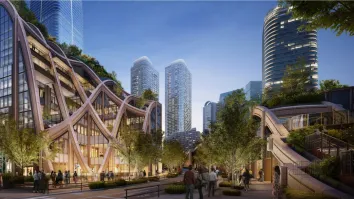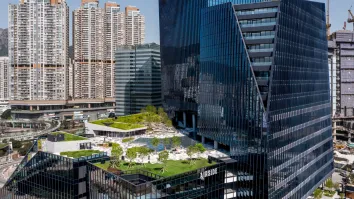
Singapore shophouse sales decline by 17.3% to S$354m in H1 2024
There were only 40 units sold during the same period.
According to a Knight Frank report, the Singapore shophouse market was quiet as sales activity continued to slow in the first half of 2024. On a half yearly basis, sales volume in H1 2024 decreased 17.3% to S$354.0 million from S$428.2 million in H2 2023.
Likewise, the sale of 40 units in H1 2024 compared to 53 units in H2 2023 represented a half yearly decline of 24.5%.
Here’s more from Knight Frank:
The average unit price also decreased by 56.5% to S$2,225 psf on land in H1 2024 from S$5,116 psf on land in H2 2023. The institutional sale of the leasehold The Rail Mall for S$78.5 million (S$744 psf on land) by Paragon REIT in June, comprised a land area of 105,563 sf (inclusive of carpark lots) that led to the substantial decline in the average unit price.
With the higher-for-longer interest rates and ongoing geopolitical tensions, shophouse buyers remained cautious, stuck in wait-and-see mode, especially in the aftermath of the money laundering case that shook Singapore in the second half of 2023. In addition, there were also shophouse transactions taking place in H1 2024 that went unreported, without caveats being lodged, as these transactions typically involved wealthy buyers who preferred to be low-key.
Despite the slowdown in the shophouse market, freehold shophouses continued to dominate sales activity in H1 2024. Of the 40 shophouse units sold, there were 35 freehold units and 5 leasehold units, a half yearly decline of 18.6% and 50.0% respectively.
As such, the total sales transaction value for freehold and leasehold shophouse units sold in H1 2024 declined to S$252.2 million and S$101.8 million respectively. However, the average unit price increased 0.8% to S$5,431 psf on land from S$5,389 psf for freehold, but decreased 76.7% to S$919 psf on land from S$3,937 psf for leasehold (Exhibit 1) when compared to H2 2023.
Nine shophouse deals in H1 2024 changed hands for S$10.0 million or more, out of which five transacted for more than S$15.0 million. In addition to The Rail Mall, a unit located at Pagoda Street in the Kreta Ayer Conservation Area was sold for S$19.0 million in March (Exhibit 2). Since H2 2019, District 8 has consistently taken the top spot with the highest number of shophouse transactions, and in H1 2024 was the only district with more than ten sales. A total of 18 units were sold for a combined transaction value of S$106.1 million. With the continued gentrification of Little India developing into a trendy tourist destination that offers unique experiences, demand for shophouses in the area is expected to be supported.
In the first half of 2024, six shophouse deals realised returns of over 100% with a combined average holding period of 20 years. A shophouse at 34 Bussorah Street topped the list, achieving the highest return of 1,223.5% when sold in March, was located within the Kampong Glam Conservation Area. It was sold for S$4.5 million in March after almost 21 years. Other significant transactions with substantial returns included two shophouse units located within the Little India Conservation Area (Exhibit 3).
A shophouse unit at 135 Dunlop Street gained 650.0% when it changed hands for S$5.3 million in January after being held for 22 years, while 46 Clive Street yielded a 425.5% return after being sold 14 years later for S$5.2 million in February.
Architect Carl Elefante coined the phrase, “The greenest building is the one that is already built”. Rejuvenating old buildings to infuse them with new life would avoid the carbon emissions released by the process of demolishing and rebuilding. As conservation properties, shophouses cannot be demolished and rebuilt. Shophouse units that are purchased can often be old and dilapidated, with buyers having to carry out major addition and alteration (A&A) works to retrofit and modernise the property.
Many contemporary shophouse buyers would have to repurpose an aging property for current use that results in higher value and returns, extending its economic life with better recurring income and consequently higher valuations. The updated property can and often does attract more upmarket tenants after A&A, such as co-living operators. The conservation process has, in effect, made shophouses a model of sustainability in urbanised Singapore where buildings are regularly razed to the ground for new builds.


















 Advertise
Advertise


